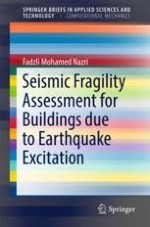2018 | OriginalPaper | Buchkapitel
2. Fragility Curves
verfasst von : Fadzli Mohamed Nazri
Erschienen in: Seismic Fragility Assessment for Buildings due to Earthquake Excitation
Verlag: Springer Singapore
Aktivieren Sie unsere intelligente Suche, um passende Fachinhalte oder Patente zu finden.
Wählen Sie Textabschnitte aus um mit Künstlicher Intelligenz passenden Patente zu finden. powered by
Markieren Sie Textabschnitte, um KI-gestützt weitere passende Inhalte zu finden. powered by
